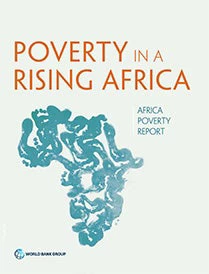
Nearly one in four households in Africa are headed by a woman. To be sure, this figure is not the same in all countries; those in Southern Africa have substantially higher rates while households in West African countries are least likely to be headed by a woman. What is true in all countries is that female headship has been increasing. The data show quite clearly that the probability that a woman aged 15 or older heads a household has been increasing over time in all sub-regions and at every age (see the figure).
What explains this notable change in household structure? Using data from the last 25 years and covering 89% of Africa’s population, my recent research with Annamaria Milazzo investigates this Africa-wide shift. Our results suggest that economic growth brings lower female headship, presumably in part due to a decline in work-related migration by men associated with a growing local economy. So what explains the seeming paradox that female headship is rising during a period of economic growth? A number of other factors are changing across Africa which are affecting this fundamental feature of household structure, including changes in demographic and population characteristics, social norms, and education levels. An extra year of schooling produces a three percentage point increase in the share of the population living in female-headed households (or FHHs for short). On average, a one-year rise in women’s age at first marriage produces a 2.5 percentage point increase in the share of the population living in FHHs, an effect almost as strong as that of an extra year of schooling. Life expectancy’s positive effect – equal to a 0.5 percentage point boost per extra year –presumably reflects the natural survival advantage of women that is revealed with higher overall life expectancy. This, in turn, results in an increase in widow-headed households. Conflict and HIV also raise a country’s share of population in female-headed households.
Women are increasingly likely to be heading households in Africa

How does this change in a key feature of household structure in Africa connect with poverty? We have seen that FHHs are increasing while poverty has been falling. The discourse about FHHs has generally been that these households are poorer compared to those headed by men. So then have FHHs been left behind by recent improvements in average household living standards? Maybe not. The women who head households in Africa are a diverse group. Some—such as married women with a nonresident husband (these could be polygynous marriages or a husband who has migrated for work) or women who choose not to be married or remarried (because they are educated and have social and economic opportunities to enable that decision)—can be expected to be relatively well-off. Others—war or AIDS widows, separated or abandoned women, and single mothers who have not ‘chosen’ headship but simply have no options—are frequently found to head disadvantaged households.
So then what has happened to the living standards of FHHs in the aggregate? Taking the set of countries where we have comparable survey pairs, which covers approximately 80% of Africa’s current population, we find that poverty declined for both male and female-headed households. But in most countries, poverty fell faster for FHHs. This pattern holds when one allows for the diversity among FHHs. For example, it is true comparing households with widow and non-widowed heads, married heads with and without a male adult household member and the same for non-married heads. The finding that poverty is falling faster for FHHs is robust to adjusting our poverty measure for household size and economies of scale in consumption (FHHs are, on average, smaller). Looking at the different types of FHHs (widowed, nonresident husband, etc.), we find that they follow dissimilar paths across countries and time periods with no one type consistently experiencing faster poverty reduction than the others, yet with at least one type usually outpacing male-headed households. There is little discernible pattern across countries. One type of FHH does well in one country or time period while another category does best elsewhere.
Decomposing the change in poverty shows that, rather than putting a break on poverty reduction, FHHs are contributing appreciably to the overall decline in poverty. This is impressive given that they are a minority (at 25% of all households).
But why has poverty fallen faster for FHHs? Perhaps poor FHHs face relatively high economic returns to the new opportunities unleashed by growth; or perhaps they have benefited disproportionately from the expansion of social protection in the region; or perhaps the group of people living in FHHs is fundamentally changing over time. Noting that we have limited data to study this topic, a first, superficial examination does not support any of these explanations. This new stylized fact about poverty in Africa warrants a closer look.
This blog is part of a series reflecting on the findings of the 2016 World Bank Report “Poverty in a Rising Africa." Next in the series: a look at how marital status impacts poverty in Africa on Jan 11, 2016. Previous blogs in the series include:


Join the Conversation